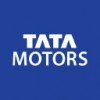Filter interviews by
Alpha-Tech Interview Questions and Answers
Alpha-Tech Interview Experiences
1 interview found
I applied via Approached by Company and was interviewed in May 2024. There was 1 interview round.
(5 Questions)
- Q1. Diffrence between corrective action and preventive action?
- Ans.
Corrective action is taken to address existing issues, while preventive action is taken to avoid potential issues in the future.
Corrective action is reactive, addressing problems that have already occurred.
Preventive action is proactive, aiming to prevent problems from happening in the first place.
Corrective action focuses on fixing the root cause of a problem.
Preventive action focuses on identifying and eliminating po...
- Q2. What is 8D? And explain 8 steps?
- Ans.
8D is a problem-solving methodology used to identify, correct, and prevent recurring problems in manufacturing and other industries.
8D stands for Eight Disciplines and is a structured problem-solving process.
The 8 steps of 8D are: 1. Establish the team 2. Define the problem 3. Develop an interim containment action 4. Identify and verify root causes 5. Choose and verify permanent corrective actions 6. Implement and vali...
- Q3. What is SPC? How to calculate X Bar and R Bar char?
- Ans.
SPC stands for Statistical Process Control. X Bar and R Bar charts are used to monitor the stability of a process over time.
SPC is a method of quality control which uses statistical tools to monitor and control a process.
X Bar chart is used to monitor the central tendency of a process by plotting the average of a sample over time.
R Bar chart is used to monitor the variability of a process by plotting the range of a sam...
- Q4. How to implement PDCA Cycle?
- Ans.
PDCA Cycle is implemented by planning, doing, checking, and acting to continuously improve processes.
Plan: Identify the problem, set objectives, and develop a plan to address it.
Do: Implement the plan on a small scale to test its effectiveness.
Check: Measure the results against the objectives and analyze the data.
Act: Take necessary actions based on the analysis to improve the process.
Repeat the cycle for continuous im...
- Q5. What is SPC? explain X bar and R bar chat?
- Ans.
SPC stands for Statistical Process Control. X bar and R bar charts are used to monitor the central tendency and variability of a process.
SPC is a method of quality control which uses statistical tools to monitor and control a process.
X bar chart is used to monitor the central tendency of a process by plotting the average of a sample over time.
R bar chart is used to monitor the variability of a process by plotting the r...
Interview Preparation Tips
Top trending discussions






Interview questions from similar companies

I applied via Recruitment Consulltant and was interviewed before Jul 2021. There was 1 interview round.
(1 Question)
- Q1. *Introduce yourself *Purpose of working in the Company *Educational Background *Family Background *Goals and Ambition
- Ans.
Experienced professional with a strong educational background and clear career ambitions, eager to contribute to the company's success.
I have over 5 years of experience in project management, leading teams to successfully deliver complex projects on time.
I hold a Master's degree in Business Administration from XYZ University, where I specialized in strategic management.
My family has always emphasized the importance of ...
Interview Preparation Tips

Interview Questionnaire
1 Question
- Q1. 1)Tmaus? 2 ) why are you lefted previous job? 3) technical skills knowledge 4) work in under pressure? 5) hr round 6) manager round
- Ans.
Interview questions for an Associate position cover various aspects like motivation, skills, and handling pressure.
1) Tmaus: This could refer to a specific term or acronym; clarify its meaning during the interview.
2) Leaving previous job: Focus on seeking new challenges or growth opportunities, not negative experiences.
3) Technical skills: Highlight relevant skills like data analysis, programming languages, or software...

I applied via Naukri.com and was interviewed before Mar 2021. There were 3 interview rounds.

(6 Questions)
- Q1. What is your family background?
- Ans.
I come from a supportive family that values education and hard work, which has greatly influenced my career path in technology.
Parents: My parents are both educators, instilling a love for learning and curiosity in me from a young age.
Siblings: I have a younger sister who is pursuing a degree in computer science, and we often collaborate on tech projects together.
Family Values: Our family emphasizes the importance of p...
- Q2. Why should we hire you?
- Ans.
I bring a unique blend of technical skills, problem-solving abilities, and a passion for innovation that aligns with your team's goals.
Strong technical skills: Proficient in languages like Python and Java, demonstrated by developing a web application that improved user engagement by 30%.
Problem-solving mindset: Successfully resolved a critical bug in a production system under tight deadlines, ensuring minimal downtime.
...
- Q3. Where do you see yourself in 5 years?
- Q4. What are your salary expectations?
- Ans.
I expect a competitive salary based on my skills, experience, and industry standards, ideally in the range of $X to $Y.
Research industry standards: For example, Glassdoor or Payscale can provide insights into average salaries for similar roles.
Consider your experience: If you have 5 years of experience, you might expect a higher salary than someone just starting.
Factor in location: Salaries can vary significantly based...
- Q5. What are your strengths and weaknesses?
- Ans.
I excel in problem-solving and teamwork, but I sometimes struggle with time management under tight deadlines.
Strength: Strong problem-solving skills - I enjoy tackling complex coding challenges, like optimizing algorithms for better performance.
Strength: Effective teamwork - I thrive in collaborative environments, having successfully led a project with cross-functional teams.
Weakness: Time management - I occasionally u...
- Q6. Tell me about yourself.
(1 Question)
- Q1. Do you have technical certifications? How many programming languages do you known? How many development tools have you used?
- Ans.
Yes, I have technical certifications and I am proficient in multiple programming languages and development tools.
I have certifications in Java and Python
I am proficient in Java, Python, C++, and JavaScript
I have used development tools such as Eclipse, Visual Studio Code, and PyCharm
Interview Preparation Tips
Move frequently
value your reputation
Get experience at a any company

I applied via Recruitment Consulltant and was interviewed before Feb 2021. There was 1 interview round.
(2 Questions)
- Q1. Open pump house and Tunnels
- Q2. Road and
Interview Preparation Tips

I applied via Recruitment Consulltant and was interviewed before Feb 2021. There was 1 interview round.
(2 Questions)
- Q1. Open pump house and Tunnels
- Q2. Road and
Interview Preparation Tips

I appeared for an interview before Jan 2021.




(3 Questions)
- Q1. What are your salary expectations?
- Q2. Any questions hr team
- Ans. My contact no not any time network area ple msg me
- Q3. Any questions hr team
Diploma
(1 Question)
- Q1. What are your salary expectations?
- Ans.
I expect a competitive salary that reflects my skills, experience, and the industry standards for a Senior Engineer role.
Research industry standards: For example, according to Glassdoor, Senior Engineers in my area typically earn between $100,000 and $130,000.
Consider my experience: With over 8 years in the field and expertise in multiple programming languages, I believe a salary in the upper range is justified.
Factor ...




Interview Preparation Tips

I applied via Job Portal and was interviewed before Dec 2019. There was 1 interview round.
Interview Questionnaire
1 Question
- Q1. First they ask basic questions like HTML SQL Java.
Interview Preparation Tips

I applied via Recruitment Consultant and was interviewed in Oct 2019. There were 5 interview rounds.
Interview Questionnaire
3 Questions
- Q1. Tell me about yourself?
- Ans.
I am a dedicated professional with a background in finance, strong analytical skills, and a passion for problem-solving.
Education: Graduated with a degree in Finance from XYZ University, where I was involved in the finance club and organized workshops.
Experience: Worked as an intern at ABC Corp, where I assisted in financial analysis and reporting, improving my analytical skills.
Skills: Proficient in Excel and financia...
- Q2. Why did you left yor last job?
- Ans.
I left my last job to pursue new opportunities for growth and to align my career with my long-term professional goals.
Career Growth: I felt that I had reached a plateau in my previous role and was seeking new challenges that would allow me to develop my skills further.
Alignment with Goals: My career aspirations shifted, and I wanted to find a position that better aligned with my long-term objectives in the industry.
Com...
- Q3. Have you ever appeared in wipro interview previously?
- Ans.
I have not interviewed with Wipro before, but I am excited about the opportunity to join such a reputable organization.
I have researched Wipro's values and culture, which align with my professional goals.
I have experience in similar roles that would be beneficial for this position.
I am eager to contribute to Wipro's innovative projects and initiatives.
Interview Preparation Tips

I applied via Applied in more than one job portal can't remember now. and was interviewed before Jan 2020. There was 1 interview round.
Interview Questionnaire
1 Question
- Q1. About struts framework.
Interview Preparation Tips
Alpha-Tech Interview FAQs
Tell us how to improve this page.
Interview Questions for Popular Designations
- Senior Executive Interview Questions
- Executive Interview Questions
- Software Developer Interview Questions
- Intern Interview Questions
- Business Analyst Interview Questions
- Graduate Engineer Trainee (Get) Interview Questions
- Associate Software Engineer Interview Questions
- Accountant Interview Questions
- Show more
Overall Interview Experience Rating
based on 1 interview experience
Difficulty level
Duration
Interview Questions from Similar Companies
Alpha-Tech Reviews and Ratings
based on 7 reviews
Rating in categories
|
Accountant
3
salaries
| ₹2.2 L/yr - ₹3 L/yr |
|
General Manager
3
salaries
| ₹22.5 L/yr - ₹50 L/yr |
|
Territory Manager
3
salaries
| ₹3.6 L/yr - ₹3.6 L/yr |
|
Zonal Sales Manager
3
salaries
| ₹17.4 L/yr - ₹25.5 L/yr |
|
Site Supervisor
3
salaries
| ₹3 L/yr - ₹3 L/yr |

Wipro

Tata Motors

Tata Steel

Asian Paints
- Home >
- Interviews >
- Alpha-Tech Interview Questions











